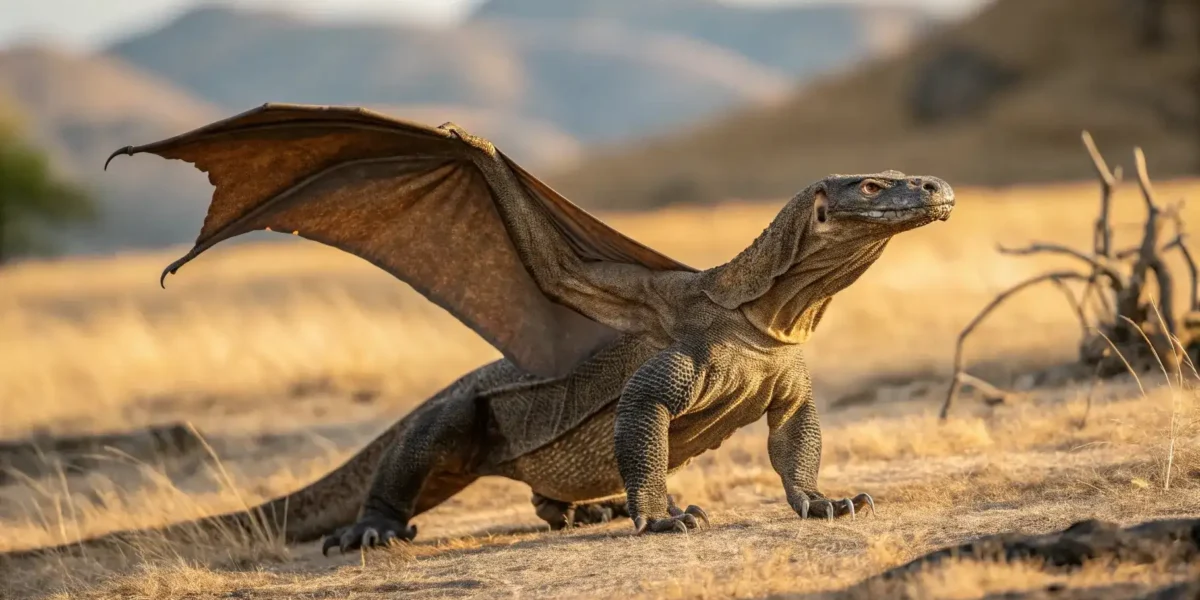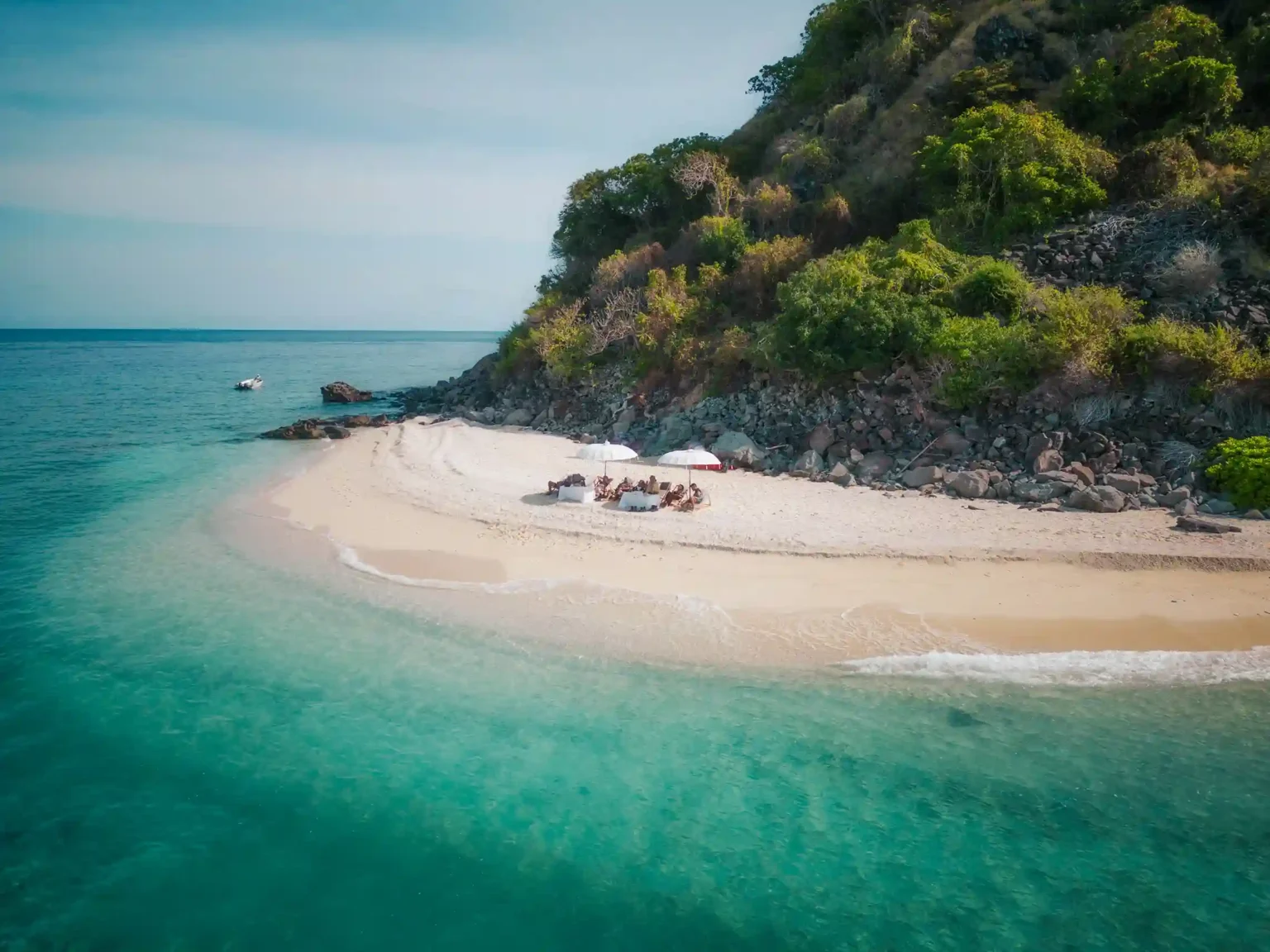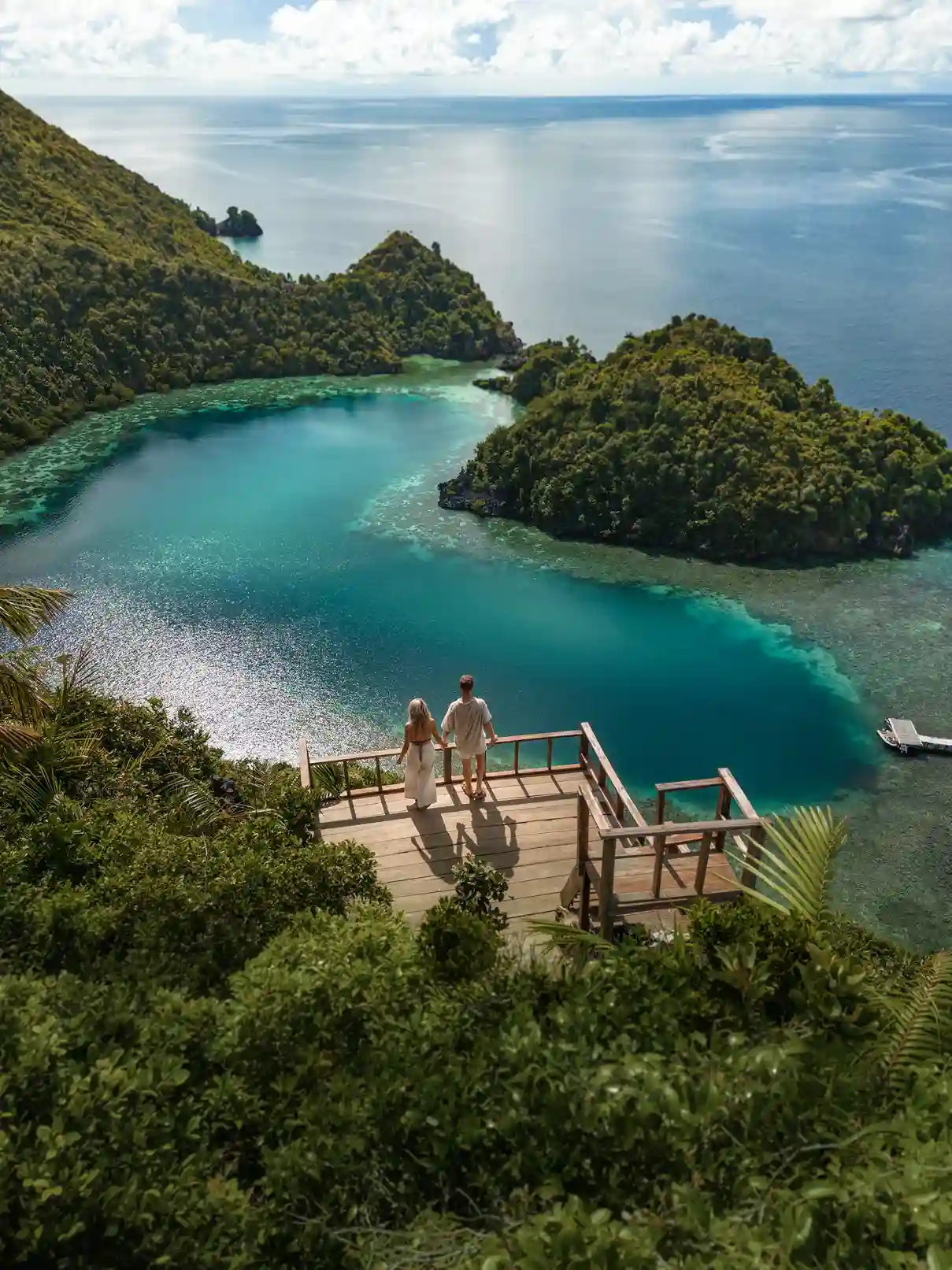When you hear the name “komodo dragon,” what pops into your mind? Maybe you picture a giant dragon with wide wings, breathing fire, and soaring proudly through the sky like Toothless from How to Train Your Dragon. But hold on—can a komodo dragon really fly?
A lot of people get it wrong because of the word “dragon” in its name. Understandable, since that word usually refers to a legendary creature with wings and formidable power. But is it true that komodo dragons can fly? Or is this just a myth carried over from their name alone? To clear up any confusion, let’s uncover the facts about this exotic animal. The komodo dragon (known locally in Indonesia simply as komodo) does have a name that surprises many folks.
So, let’s dive into the real story!
Komodo Dragon: A Rare Dragon from Indonesia
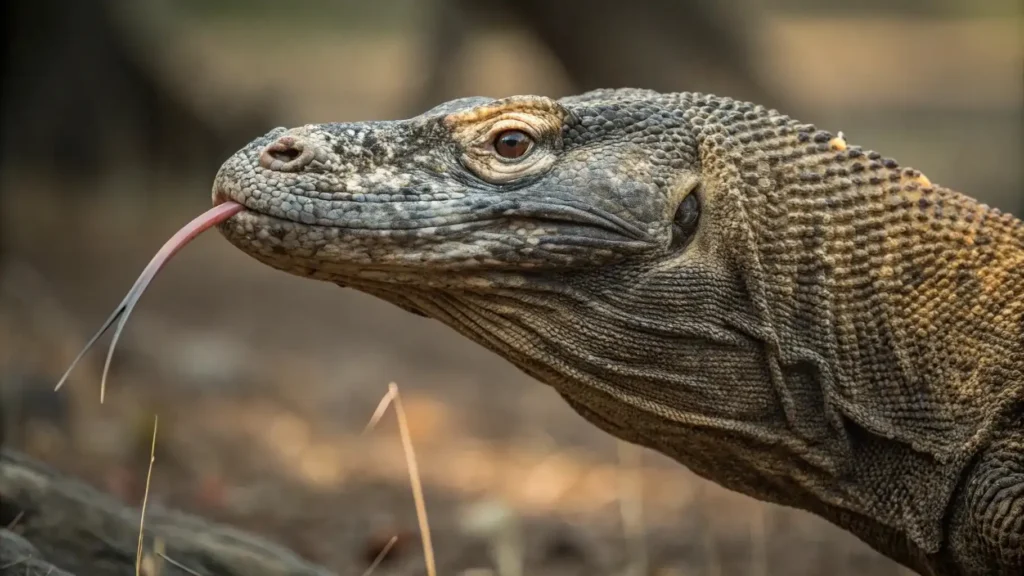
A komodo dragon (Varanus komodoensis) is the largest lizard species on Earth. You’ll only find it in the wild in Indonesia, specifically in Komodo National Park, which includes Komodo Island, Rinca, Padar, and several smaller surrounding islands. This animal is the top predator in its ecosystem—an exotic creature that can leave you in awe and maybe a bit terrified too.
Don’t picture it as a tiny house gecko. An adult komodo dragon can grow to around three meters (almost ten feet) in length and weigh somewhere between 70 to 90 kilograms (150 to 200 pounds). Its body is muscular, supported by four sturdy legs, and ends with a long, heavily built tail.
A komodo’s skin ranges from grayish-brown to blackish tones. It has a thick, scaly texture that protects its body from the blazing sun and dry conditions. Its head is fairly large, with a powerful jaw full of sharp teeth. If you look closely, the head is somewhat flattened, with intense eyes that really highlight its predator vibe. Although it looks intimidating, the komodo is a fascinating creature to study because it’s an ancient product of evolution—almost like a small dinosaur that still walks the Earth today.
Komodos typically live in open savannas, scrublands, and dry tropical forests. In the wild, they often hang out in hot, rocky areas. Interestingly, they’re not just land-dwellers—these lizards can also swim with ease. They hunt animals like deer, pigs, or buffalo, usually by stealth. With a keen sense of smell, they can detect potential prey from several kilometers away. Once a komodo zeroes in on its target, it creeps in quietly, then strikes at lightning speed with a venomous bite.
They’re mostly solitary except when it’s time to mate or when they’re fighting over a carcass. A female komodo can lay around 15 to 30 eggs at once. She usually deposits them in a mound of dirt or a dug-out nesting hole.
Do Komodo Dragons Have Wings?
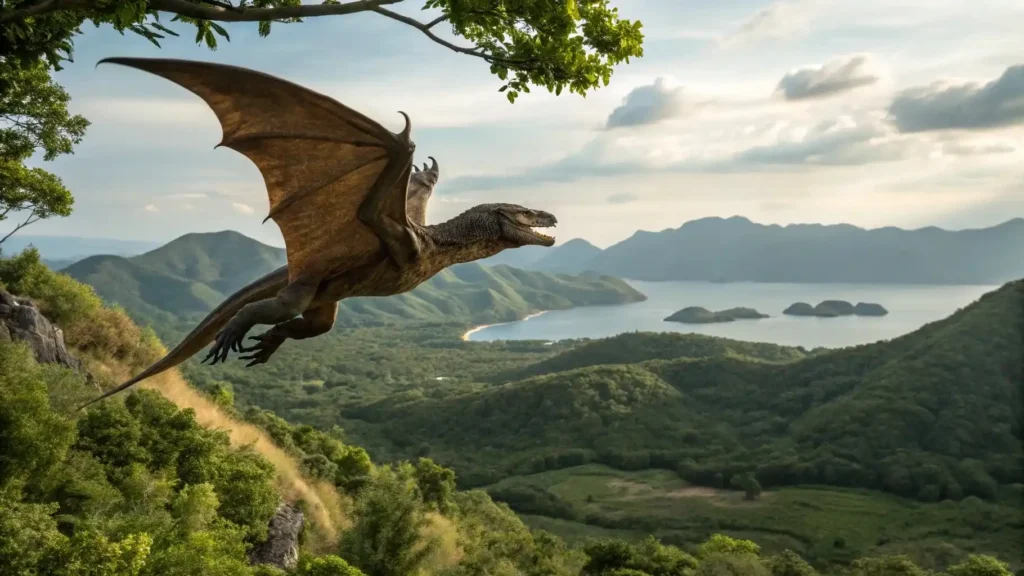
From the get-go, that word “dragon” can make people think komodos might have wings. Maybe you imagine a grand European-style dragon gliding through the sky or a Chinese dragon dancing among the clouds. But biologically speaking, komodos don’t have wings. Their bodies resemble other reptiles: they have four legs for support, an elongated torso, and a strong tail.
The komodo dragon is officially classified as a lizard, not a bird or a bat. Wings are a special anatomical feature you see in creatures like birds, bats, or insects. If komodos had wings, their skeleton would look totally different, built around the muscles needed for flight. The truth is, nature gave them a body tailored for rough terrain and hunting on land, not for soaring in the air.
Their front and back legs are equally important. A komodo moves low to the ground, keeping its center of gravity close to the earth. This stance helps it stay balanced when attacking prey or climbing rocky terrain. The komodo’s tail, meanwhile, is incredibly powerful. It can whip that tail with surprising force when it feels threatened—enough to knock down rivals or defend itself. That same sturdy tail also helps it become an excellent swimmer, so don’t be shocked if you see a komodo crossing a shallow channel to reach another island.
In various myths, dragons are portrayed as huge, scaly creatures, sometimes with wings. However, a komodo is a real animal—one of the most ancient lizard species still around. Even though it’s called a “dragon,” in reality, it has no wings at all. The “dragon” part of its name points more to its fierce appearance, large size, and reputation as a top predator.
Read more: What Island Do Komodo Dragons Live On? Check The Facts Here!
Can Komodo Dragons Fly? The Scientific Explanation
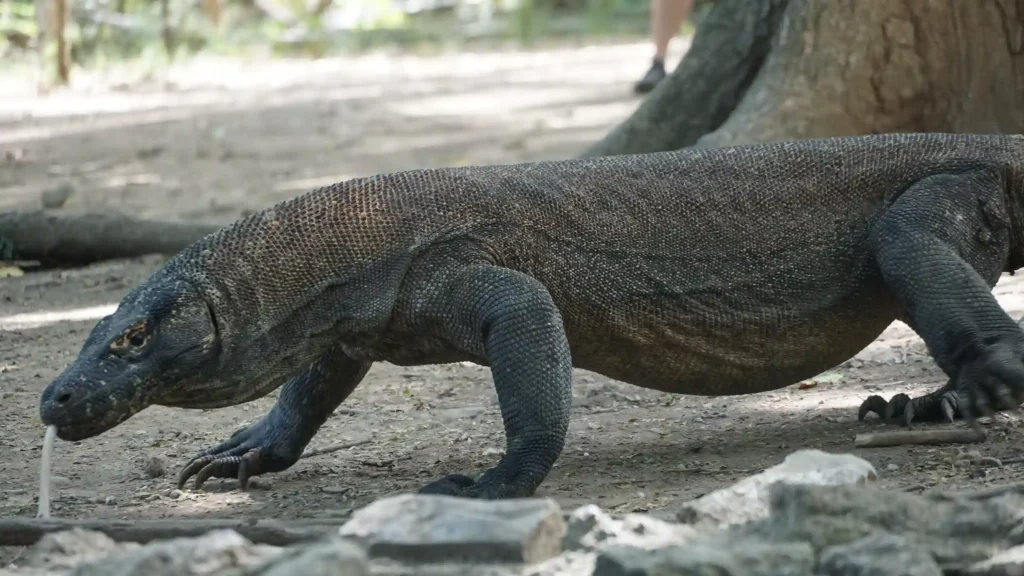
The answer is clear: No. Nature never designed this creature to fly. Komodos are land-based reptiles—they’re born, grow up, hunt, and reproduce on solid ground.
For any animal to fly, it would need wings built with certain bones, specialized muscles, and a lightweight skeleton. Birds, bats, and insects have that kind of structure. Komodos rely on their strong legs, powerful jaws, and robust tails to swim and take down prey. There’s nothing in their anatomy that points to flight. They’re not even known for high jumps.
Maybe you’ve heard stories or seen artwork mixing mythical dragons with komodos, suggesting they’re real-life winged beasts. In reality, komodos living across several Indonesian islands have never shown any ability or behavior that resembles flying. Modern biology also places them squarely in the terrestrial reptile category, backed by fossil records and DNA studies.
Komodo National Park is a protected area for a reason. Aside from preserving the ecosystem, researchers and conservationists want to correct these misconceptions. Komodos aren’t mythical monsters. They’re real, remarkable, and can be scary because they’re apex predators in their habitat—but flight isn’t part of their skill set.
If Komodo Dragons Can’t Fly, Then What Are They Good At?
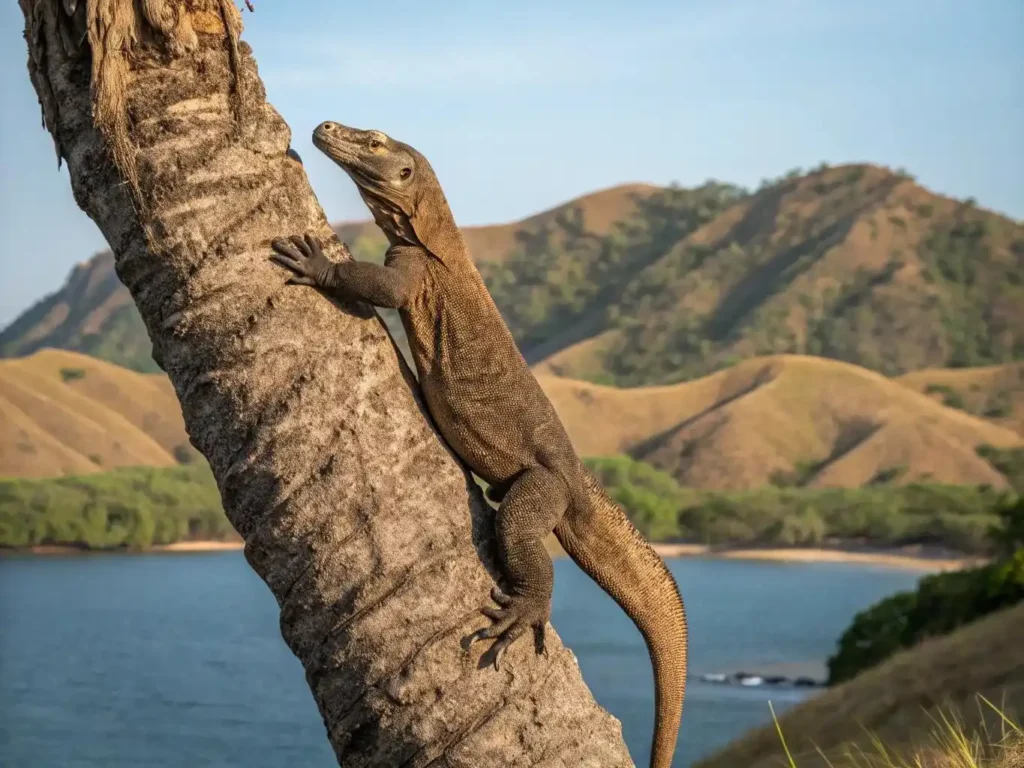
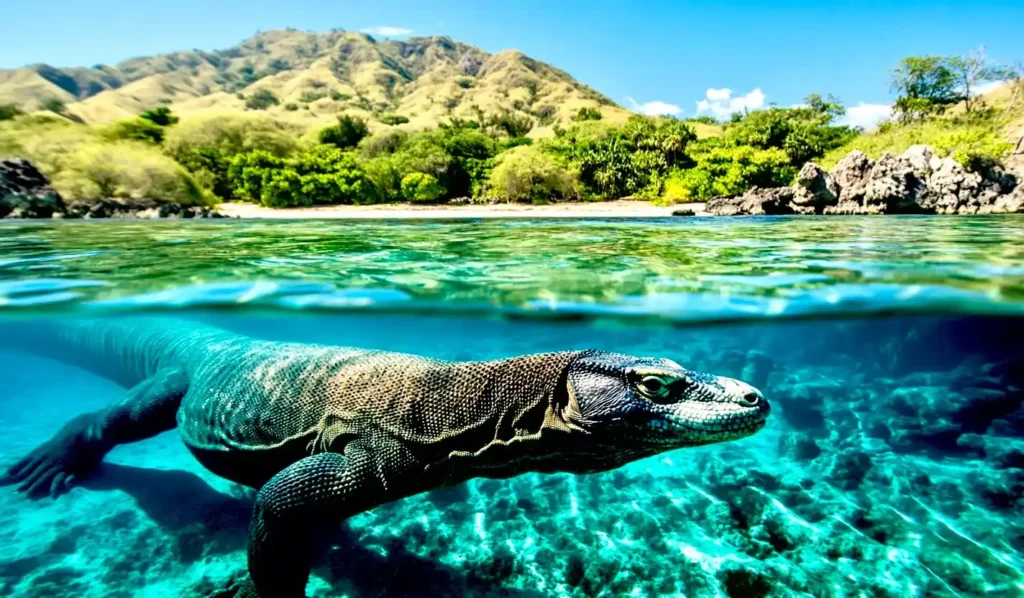
Alright, so komodos can’t fly. But did you know they have some other incredible abilities?
- Great at Climbing Trees
Young komodos are expert climbers. They often head up into trees to avoid adult komodos, which sometimes display cannibalistic behavior. Staying off the ground helps them survive and hone their hunting instincts. Imagine a lizard over three feet long scaling a tree with ease. Pretty amazing, right? - Excellent Swimmer
With a long tail and strong body muscles, komodo dragons are also impressive swimmers. They can glide from one island to another without much trouble. This skill comes in handy, especially when they’re on the hunt or looking for a new territory. - Smart Hunter
Komodos don’t just rely on brute strength; they also use clever hunting strategies. They may wait patiently, then strike fast and lethal. Their saliva contains bacteria and venom, which can quickly weaken or immobilize their prey.
Read more: Can Komodo Dragons Swim? Here’s the Fact!
Let’s Visit Komodo Dragons with Komodo Luxury!
So, can a komodo dragon fly? No. Even though it’s called a “dragon,” it doesn’t have wings and certainly can’t take flight. Don’t be disappointed, though, because this reptile has plenty of other impressive skills—climbing trees, swimming long distances, and hunting effectively. Komodos aren’t just exotic animals; they’re a crucial part of Indonesia’s natural heritage.
Now you know the truth: komodo dragons can’t fly, but they’re real creatures far more astonishing than any make-believe dragon could ever be.
A komodo dragon stands as a symbol of Indonesia’s natural strength—rare, powerful, and mesmerizing. You can see these incredible animals up close in their natural habitat at Komodo National Park, recognized as a UNESCO World Heritage Site.
If you’re eager to explore Komodo Island and meet these awesome reptiles face-to-face, join the exciting adventure with Komodo Luxury. They offer a Komodo Island Tour that’s exclusive, comfortable, and truly memorable. Enjoy the journey on a luxury vessel, guided by experts, following special routes tailor-made for real nature and adventure lovers.












